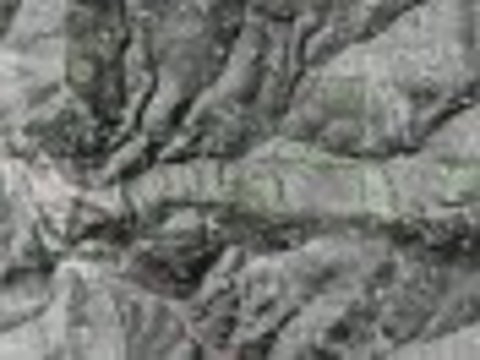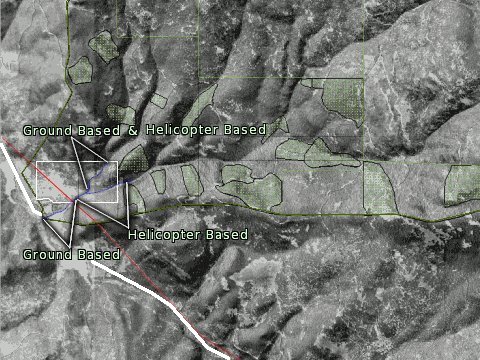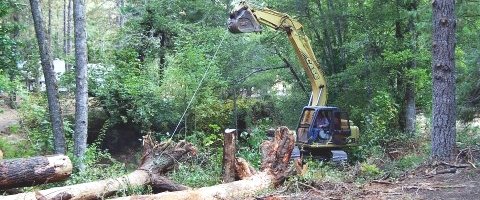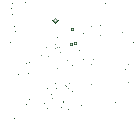~~* The Singing Falls Stream Restoration Project *~~
 ϕ
ϕ
Project Implementation Phase
Safely Building Ground Based Habitat Structures
Image Galleries Table Located Below Text
Aquatic Habitat Restoration-Cultivating the Domestic/Wilderness Interface
After a lengthy process of analysis, design and the staging of habitat building materials, the time of actual implementation began. This site has documented most of the process that leads up to this phase of development.
If you place your cursor over the small thumbnail image you will see a 3d view of the project site area. The red line shows the right of way for the secondary power line passing through the lower forty acres of the ranch. The white outline is the basic outline of the singing falls property. The blue line is the stream and riparian area.

 Project site in 3D
Project site in 3D
A significant portion of the aquatic habitat project was implemented with ground based equipment. The decision to do this was based on several elements impacting operations.
As indicated in the above image, a secondary power line runs diagonally through the lower 40 acres of the ranch. We didn't want the helicopter flying low over these lines with heavy payloads. My neighbors all live in the area located between the power line and the road. (The road is illustrated by the bright white line.) So, public traffic, private dwellings and the power grid became determining factors to use ground based equipment on the western side of the project.
One other factor plays into it. Helicopter placement is great to use when you want efficient placement of large wood. It can be very precise but there is a level of variability that must be taken into account. The lower end of the project required several rock weir structures that had to be put in using a laser level and more precise measurements. The alteration of the old mill pond area, which was being designated as a winter refugia area, needed this level of attention also.
The ground based work was done by Rex Crume and his son Matthew. He's a local rancher/contractor here in the Tiller, Oregon area. He's a long time resident with plenty of experience with heavy equipment on national forest grounds. Usually, during and after a forest fire, he will be contracted by the USFS to do the restoration work on ecologically damaged zones.
The gallery linked to in the below table illustrates some of the work that was done by the ground based equipment.
Click the left table cell below to view the gallery of images.
| Ground Based Habitat Structures Images | Free Restoration Guidelines |

Excavator used for Ground Based Habitat Structures
stream index
top






